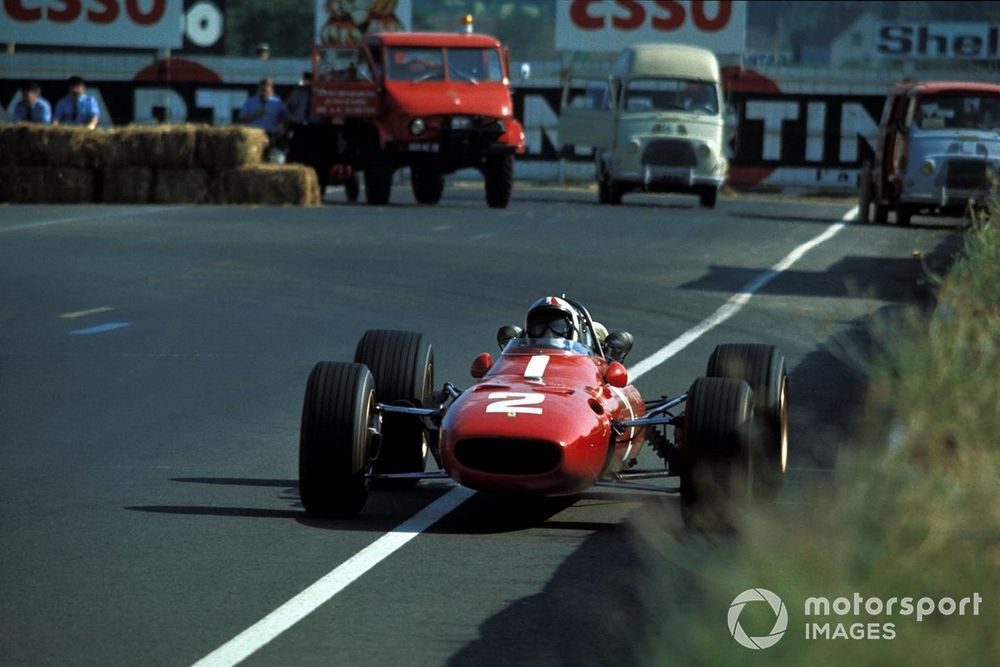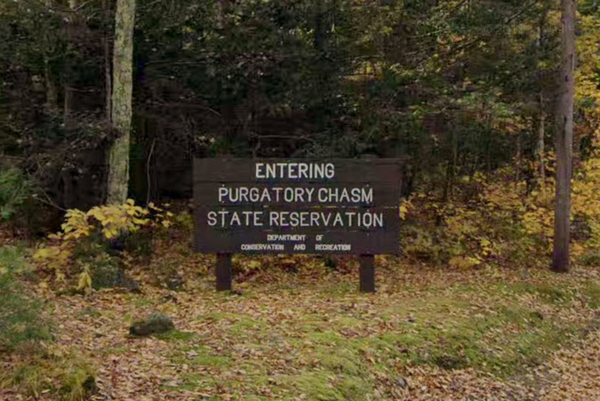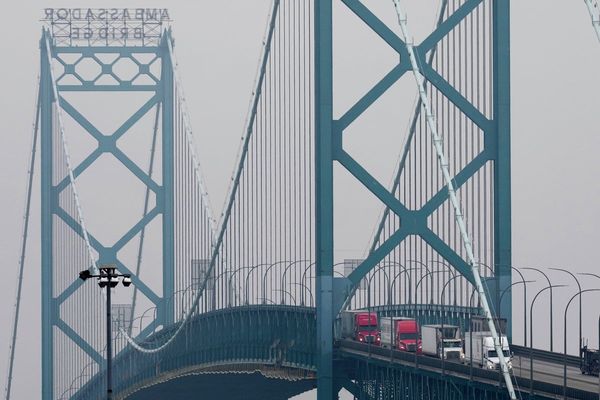
Formula 1 has raced at more than 70 different tracks around the world, and stalwarts like Silverstone and Monza have hosted grands prix in almost every season of the series. Not every track has been quite so successful, however, and F1 decided never to return to some circuits for all manner of reasons.
In total, 10 tracks have hosted just a single grand prix over F1’s 75-year history, including facilities across America, Europe and Africa. These racetracks were called on to host events while F1 struggled through global pandemics, or to try and bring the series to new audiences around the world. But F1 elected never to return to some venues due to everything from challenging track conditions to poor ticket sales.
Pescara Circuit – 1957 Pescara GP
The longest circuit Formula 1 ever raced at had one of the shortest stints as an F1 venue, with the Pescara Circuit on the Adriatic coast hosting just a single race in 1957.
The track started in the town of Pescara, Italy, before winding its way around the surrounding area on a 16-mile-long loop that packed in more than 30 corners and two eye-wateringly long straights.
During its one and only official F1 race, Argentine racer Juan Manuel Fangio claimed pole position, but ultimately lost out in the race to the Vanwall of Stirling Moss. The result was overshadowed by fears of driver safety on the track, with Enzo Ferrari even going so far as to stop his team from competing in the race. Safety concerns continued after the event and, following a two-year break, it was downgraded to run Formula 2 races only.
Ain-Diab, 1958 Moroccan GP
A year later, Formula 1 trialled an event in Morocco as part of the 1958 championship. For the event, a street course was built around the road between Casablanca and Azemmour, which covered almost five miles.

While the track hosted a non-championship event in 1957, the ‘58 season marked the only time a Moroccan race offered up points for the drivers’ and constructors’ championships. In fact, as the last race of the 1958 season, the Moroccan race decided that year's champion as Mike Hawthorn’s second-place finish earned him enough points to claim the crown.
The Ain-Diab circuit was another with safety concerns, however, after a serious crash left Stuart Lewis-Evans in hospital where he ultimately died as a result of injuries he sustained in the incident.
AVUS, 1959 German GP
Formula 1’s most unorthodox track was the Automobil-Verkehrs-und Übungsstraße in Germany, or the AVUS for short. For its debut F1 championship race in 1959, the circuit was a little over five miles long and comprised of two 180-degree turns that were connected by a pair of parallel straights.
This wild layout meant that speeds were high, as much as 117mph in the race, but spectator engagement was low as crowds would get short burst of action separated by much quieter periods.
The track was home to a formidable banked corner that was nicknamed “the wall of death” by drivers and several racers flew over the top of the corner in competition. The risks associated with these banked turns and the political motivation behind its inclusion on the F1 calendar, ultimately, paved the way for its removal from the schedule. It probably wasn’t a track that was missed by many drivers, and Stirling Moss even branded it a “dump.”
Circuito de Monsanto, 1959 Portuguese GP
Portugal has been a regular on the F1 calendar, with tracks in Portimão and Estoril hosting events in recent decades. Before setting up shop at these permanent tracks, F1 raced on a street circuit in Lisbon in 1959.

Built in the suburbs of the Portuguese capital, the 3.4-mile track was a favourite of sportscar racers before F1 set up shop in the late 1950s. The race was won by Stirling Moss in his Cooper Climax, with the Brit finishing a lap ahead of his team-mate Masten Gregory in second. The big talking point of the race, however, was a dangerous crash that saw Australian driver Jack Brabham fly out of his car and land on the racetrack.
Circuito de Monsanto was, ultimately, abandoned due to its layout and construction, which comprised a variety of track surfaces, blind corners and narrow sections that made it dangerous for drivers. Racing continued at the site across other series until the 1970s, when it was permanently dropped as an international motorsport venue.
Sebring International Raceway, 1959 United States GP
These days Sebring is a Mecca for endurance racing, but back in the 1950s it hosted F1 racing and the final round of the 1959 championship.
The track F1 raced on was a far cry from the facility that now hosts the 12 Hours of Sebring. The 5.2-mile track in Florida comprised of 12 turns that took F1 machinery of the day around three minutes to navigate.
While Sebring holds the title as being the first purpose-built course to host an F1 race in America, its time on the calendar was short-lived, after drivers complained about the lack of consistency in track surface and issues with maintenance of the facility.
Riverside International Raceway, 1960 United States GP
Sebring’s removal from the calendar paved the way for Formula 1’s next crack at breaking America with a race at the Riverside International Raceway in California. The 1960 US Grand Prix was the second race that year to take place in America, with F1 also including the Indy 500 as part of the championship.
Riverside was a popular track among American road racers when it found its place on the F1 calendar, and the race it served up was pretty exciting. However, the grand prix was far from a commercial success with estimates suggesting only 5,000 of the promised 70,000 spectators showed up to watch.

Poor attendance and financial issues spelled the end of the Riverside race, after the 1960 event failed to collect enough ticket money to cover the prize pot. As such, it was overlooked for the 1961 season and the facility eventually closed its doors in the 1980s.
Zeltweg Airfield, 1964 Austrian GP
Before the Red Bull Ring took over hosting responsibilities, Formula 1 trialled an event on an old Austrian Air Force base that was home to a track with just four corners.
The L-shaped circuit hosted a non-championship race in 1963 and then made the jump to F1 for the 1964 Austrian Grand Prix. The track served up Italian racer Lorenzo Bandini’s one and only win for Ferrari, but sadly wasn’t destined to stay on the calendar for long.
Despite Formula 1 having ambitions to continue hosting events in Austria for longer, the event at Zeltweg Airfield was canned until a permanent track in Spielberg opened in 1970. F1 made the decision after drivers complained about the narrow, bumpy track and spectators were left disappointed with the poor viewing areas.
Bugatti Circuit, 1967 French GP
France doesn’t host an F1 round any longer, after Paul Ricard was scrapped from the calendar after the 2022 season. Long before Paul Ricard even opened its paddock doors, F1 trailed a race at the Bugatti Circuit, which is located within the Circuit de la Sarthe that hosts Le Mans every year.
The track used the beginning of the Le Mans track, before looping back on itself and using a section of track used by the circuit’s racing school. The layout wasn’t popular among drivers, and the use of the Le Mans pit facilities that were built for 55 cars made the F1 machinery look a little lost.

On top of this, just 20,000 people turned up to watch over the grand prix weekend, compared with the nearly 200,000 who turn up to Le Mans at the same site. As a result, F1 returned to the Rouen-Les-Essarts and Circuit de Charade tracks for subsequent French grands prix.
Fair Park circuit, 1984 Dallas GP
In Formula 1’s quest to find a permanent home in the U.S., it raced at 12 different tracks across the country, including the Fair Parks circuit in Dallas, Texas. For the 1984 season, F1 added a race in Dallas following the Detroit Grand Prix and it’s an event that went down in history for all the wrong reasons.
Temperatures north of 37 degrees Celsius wrought havoc on the cars and track, with sections of the road that made up the street circuit crumbling under the intense heat. Drivers complained about the difficult conditions on the track and the site’s challenging layout, which comprised of mostly 90 degree turns around the Texas State Fairground.
Organisers also struggled to turn a profit as attendance dropped and hosting fees rose, and faced backlash from the local community. This perfect storm of issues meant that F1 never returned to the streets of Dallas.
Donington Park, 1993 European GP
For the 1993 European Grand Prix, Donington Park found its moment in the F1 spotlight and put on an almighty show. The race was dominated by a stunning opening lap from Ayrton Senna, who went from fifth to first.
The European GP was an event that hopped from track to track, so after F1 hosted the event at Donnington in 1993 it went on to be run around circuits such as Jerez and the Valencia Street Circuit. Despite a plan to return grand prix racing to Donington in the mid-2000s, a lack of cash to upgrade the track’s facilities meant F1 never returned.
Mugello Circuit, 2020 Tuscan GP
When Formula 1, and the rest of the world, put events on hold in 2020, it was feared that the championship may never get up and running again in the midst of the Covid-19 pandemic.

However, after a mandated factory shutdown ended and lockdowns relaxed around the world, F1 rustled up a shorter calendar for 2020 that included events in Europe and the Middle East. As part of that new calendar, an event was hosted at Mugello, which is historically used for motorbike racing.
The track was widely praised for stepping in as an F1 super-sub, but its layout and lack of run-off areas meant Mugello wasn’t quite up to the championship’s usual standard. What’s more, with F1 committed to racing in Imola and Monza, justifying a third race in Italy was challenging.







